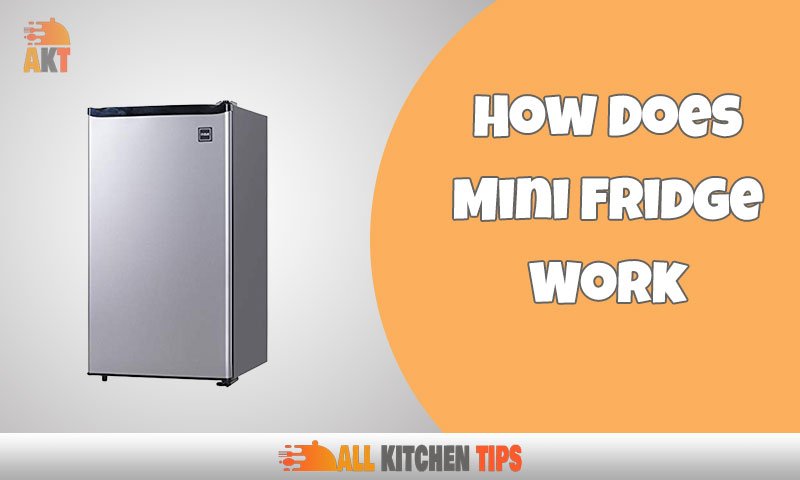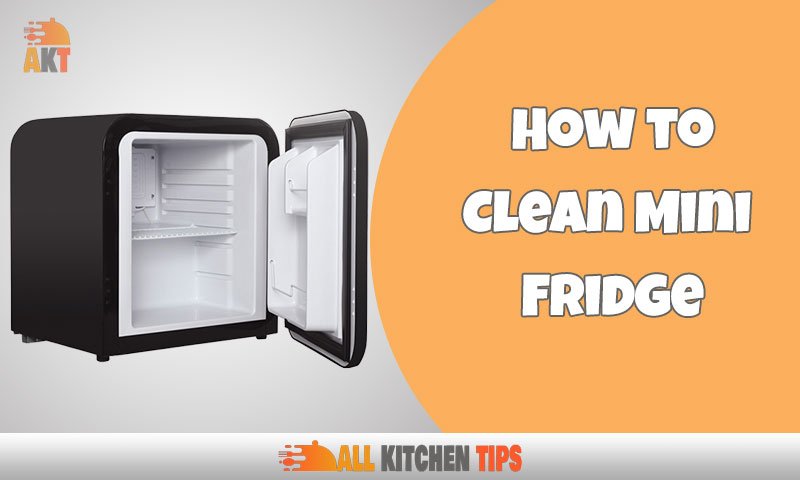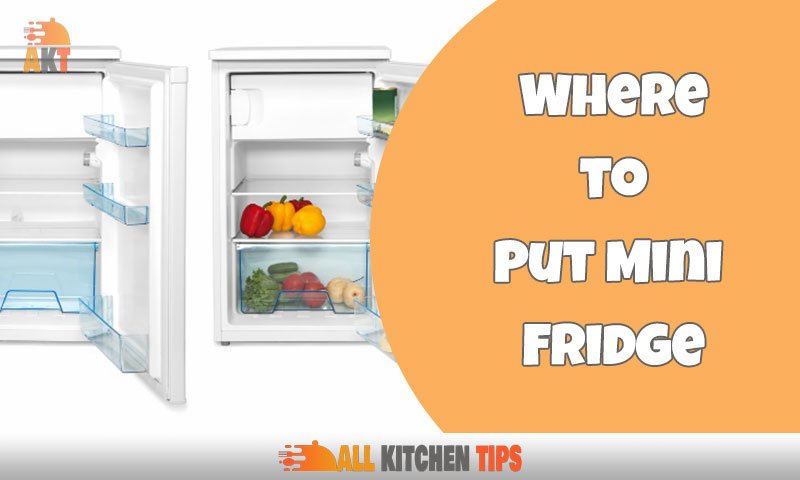To tell if your fridge is cold enough without a thermometer, check for signs such as a consistent chill, ice formation, and food freshness. Additionally, monitor the refrigerator’s internal temperature control settings and use your senses to detect any unusual odors or warm spots.
Remember to keep the fridge door closed as much as possible to maintain the cold temperature. Regularly cleaning the refrigerator coils and ensuring proper air circulation can also help maintain the ideal temperature. Following these guidelines will help ensure your fridge is operating at an appropriate temperature without the need for a thermometer.
The Importance Of Refrigerator Temperature
Maintaining the right temperature in your refrigerator is crucial for ensuring food safety and quality. Incorrect fridge temperatures can have adverse effects on your food. It can lead to bacterial growth, spoilage, and potential foodborne illnesses. Cold temperatures help inhibit the growth of bacteria, while warmer temperatures can accelerate spoilage.
It is important to regularly check if your fridge is cold enough to keep your food fresh and safe. While a thermometer is the most accurate way to measure temperature, there are a few other indicators you can look for.
These include feeling the temperature of items in the fridge, checking for condensation or frost, and monitoring the expiration dates of perishable foods. By paying attention to these signs, you can ensure that your fridge is keeping your food at the right temperature, minimizing the risk of spoilage and contamination.
Understanding Optimal Refrigerator Temperature

The optimal temperature range for fridges is crucial to ensuring food safety and preservation. To determine if your fridge is too warm or too cold, follow these simple steps. First, check if your drinks are properly chilled. Place a glass of water in the fridge and see if it feels cold to the touch.
Additionally, feel the items in the freezer. They should be frozen solid, not partially thawed. Moreover, pay attention to any spoiled or expired food. If your food is spoiling quickly, it may indicate that the fridge temperature is not optimal.
In addition, consider investing in a refrigerator thermometer to accurately measure the temperature. By adhering to these guidelines, you can ensure that your fridge maintains the correct temperature for optimal food storage.
Signs Of A Warm Refrigerator
Is your fridge not cooling as it should? Here are signs to look for. Spoiled food and the risk of foodborne illnesses are major concerns. But how can you identify if your fridge isn’t chilling properly? Let’s go over some tricks.
First, check if the ice cream is soft or if the milk has gone bad sooner than usual. You can also place a thermometer inside the fridge for an accurate reading. Another clue is the condensation build-up on the walls. Additionally, listen for any unusual noises coming from the motor.
Finally, pay attention to any strange odors emanating from the refrigerator. By following these guidelines, you can determine if your fridge is keeping your food properly chilled.
Identifying A Cold Fridge
It can be difficult to determine if your fridge is cold enough without a thermometer. However, there are some signs you can look out for. One indication is if your fresh produce is freezing or getting damaged. If you notice that your fruits and vegetables are becoming icy or turning mushy, it could be a sign that your fridge is too cold.
Another clue is if your drinks or other liquids are freezing or forming ice crystals. This suggests that the temperature inside the fridge is too low. Additionally, if you find that your food is freezing faster than usual or if items near the back of the fridge are freezing while those in the front remain at a normal temperature, it’s a clear indicator of an excessively cold fridge.
By paying attention to these signs, you can ensure that your fridge is at the optimal temperature for food storage.
Checking Your Fridge Without A Thermometer
Determining if your fridge is cold enough without a thermometer is easy and convenient. Here are some simple methods to gauge the fridge’s temperature and ensure it is chilling effectively. Firstly, check for ice formation in the freezer, as it indicates proper cooling.
Next, feel the temperature of food items inside the fridge; if they are cold to the touch, it implies adequate cooling. Additionally, observe any signs of food spoilage or odors, as insufficient cooling can cause these issues. Moreover, pay attention to the condensation on the fridge walls; excessive moisture suggests a potential temperature problem.
Lastly, listen for the consistent humming sound of the fridge compressor, which indicates proper functioning. By following these DIY tests, you can easily determine if your fridge is maintaining the right chilling temperature without relying on a thermometer.
The Water Bottle Test
To determine if your fridge is cold enough without a thermometer, you can try the water bottle test. Fill a plastic bottle with tap water and leave it in the refrigerator for at least eight hours. After that, take the bottle out and observe the water.
If it’s still cold and has a slight chill, your fridge is likely at the right temperature. However, if the water is too warm or completely frozen, adjustments to the temperature setting may be necessary. Remember, maintaining the appropriate temperature is crucial for food safety and preserving freshness.
Regularly monitoring your fridge’s performance using simple tests like the water bottle test can help ensure your food stays cool and safe. So, try this easy method to determine if your fridge is keeping your food properly chilled.
The Ice Cube Method
Determining if your fridge is cold enough without a thermometer is possible with the ice cube method. This method involves checking the rate at which ice cubes freeze. When placed in your freezer, observe how quickly the cubes solidify. If they freeze within two to three hours, your fridge is likely at the right temperature.
This method helps because ice cubes freeze at a specific temperature, so their freezing time can indicate if your fridge is cold enough. By following these guidelines, you can easily assess the temperature of your fridge without relying on a thermometer.
Using A Refrigerator Thermometer Alternative
Using alternative devices to measure fridge temperature has its own pros and cons. One option is a simple glass of water. Place it in the middle of the fridge and monitor its temperature. However, this method is not as accurate as a dedicated thermometer.
Another option is using a digital meat thermometer. It can give you a rough idea of the temperature, but it may not be as precise as a refrigerator thermometer. Some people even rely on the touch method, where they check if the inside of the fridge feels cool enough.
However, this method is highly subjective and may not give accurate results. Ultimately, while these alternatives can be helpful in a pinch, investing in a reliable thermometer is the best way to ensure your fridge is cold enough.
Maintaining Optimal Fridge Temperature
Proper refrigerator temperature is crucial for food safety and preservation. Without a thermometer, you can still check if your fridge is cold enough. Here are some tips for maintaining the optimal temperature. Firstly, keep the fridge full but not overcrowded to help maintain a consistent cold environment.
Secondly, check the fridge door seals for any leaks or gaps that could let warm air in. Thirdly, avoid placing hot or warm food directly in the fridge, as it can raise the temperature. Additionally, clean the coils regularly to ensure proper airflow and cooling.
Moreover, monitor the internal temperature using a standalone fridge thermometer if needed. By following these guidelines, you can ensure your fridge is cool enough and your food stays fresh and safe.
Organizing Your Fridge Properly
Properly organizing your fridge is crucial for optimal airflow and cooling. Strategically arrange your food to ensure efficient temperature distribution. Place items in a way that allows air to circulate freely. Avoid overcrowding shelves and blocking vents. Keep perishable foods towards the back for maximum coldness.
Group similar items together, such as dairy products or condiments, to maintain consistency in temperature. Utilize door compartments for items that don’t require extreme coldness. Regularly monitor and adjust the temperature settings to maintain the ideal fridge temperature. By following these strategies, you can ensure that your fridge is cold enough without relying on a thermometer.
Avoiding Overcrowding And Blocked Vents
Overcrowding the fridge can have negative effects on temperature regulation and lead to blocked vents.
Inspecting And Cleaning The Fridge Components
Regular upkeep is essential to preventing temperature issues with your fridge. Begin by inspecting the door seals, coils, and vents for any potential problems. Make sure the seals are intact and not damaged or worn out. Clean the coils regularly to avoid dust buildup that can affect cooling efficiency.
Check the vents for any blockages that could hinder proper airflow. If you notice any issues during your inspection, take the necessary steps to address them promptly. By staying proactive with maintenance, you can ensure your fridge is running at the optimal temperature without the need for a thermometer.
So, don’t overlook the importance of inspecting and cleaning these crucial components of your fridge to maintain its coldness.
Troubleshooting Fridge Temperature Issues
When your fridge isn’t cooling properly, there are a few steps you can take to troubleshoot the issue. First, check the temperature settings and make sure they are set correctly. Next, inspect the refrigerator’s condenser coils and clean them if necessary.
Check for any obstructions in the vents that may be blocking the airflow. Additionally, ensure that the door seals are tight and do not allow cold air to escape. If these steps don’t solve the problem, it may be a sign of a faulty thermostat or compressor, in which case it’s best to call a professional for repair.
By addressing these common issues, you can ensure that your fridge is operating at the right temperature and keeping your food fresh.
Fridge Not Cold Enough
Determining if your fridge is cold enough is crucial for food safety. A temperature of 4.1°c or below is ideal. If your fridge isn’t cold enough, it could be due to several reasons. Firstly, check if the temperature settings are correct.
Next, ensure that the fridge door is closing tightly, as gaps can let warm air in. Another possible cause is a malfunctioning thermostat or compressor, which may require professional assistance. DIY fixes include cleaning the condenser coils and checking for any frost build-up in the freezer.
Additionally, avoid overfilling the fridge, as proper air circulation is necessary for cooling. If you’ve addressed these issues but the fridge remains warm, it’s time to seek professional help. Refrigerators are complex appliances, and experts can diagnose and solve potential problems efficiently.
Refrigerator Too Cold
Refrigerator temperatures that drop below the ideal range can cause freezing problems with food.
Uneven Cooling In The Refrigerator

Uneven cooling in the refrigerator can be a frustrating issue for many homeowners. Understanding temperature inconsistencies in fridges is essential to resolving this problem. Fortunately, there are tactics that can help with this issue. Firstly, check the placement of the food items inside the fridge, ensuring there is proper airflow.
Additionally, make sure the fridge is not overfilled, as it can obstruct the cooling process. Moreover, clean the condenser coils regularly to enhance the refrigerator’s efficiency. Furthermore, check if the door seal is intact and replace it if damaged. Finally, adjust the thermostat settings to the manufacturer’s recommended temperature range.
By implementing these tactics, you can resolve uneven cooling problems in your fridge and ensure your food stays fresh.
FAQ
Can You Tell If A Fridge Is Cold Enough Without A Thermometer?
Yes, you can tell if a fridge is cold enough without a thermometer by checking the temperature of food items inside.
How Can I Check If My Fridge Is Cold Enough?
To check if your fridge is cold enough, place a thermometer inside and ensure it reads between 34°f and 40°f.
What Are The Signs Of A Properly Cold Refrigerator?
A properly cold refrigerator will have frozen ice cream, drinks that are chilled, and no signs of spoilage on food items.
Why Is It Important For A Fridge To Be Cold Enough?
It is important for a fridge to be cold enough to prevent bacterial growth, keep food fresh, and maintain food safety.
Conclusion
To determine if your fridge is cold enough without a thermometer, there are several simple methods you can employ. By utilizing these techniques, you can ensure that your food stays fresh and avoid potential health risks associated with improper refrigeration.
Checking the consistency and texture of certain foods, such as butter or cheese, can give you a clue as to the temperature inside your fridge. Additionally, observing the behavior of liquids, like milk or juice, can offer insights into fridge temperature.
Furthermore, using a simple water bottle trick or monitoring the presence of condensation can help you gauge if your fridge is adequately cold. Regularly performing these checks will help you maintain a safe and efficient refrigerator, ensuring the longevity of your stored food items and keeping your loved ones healthy.
With these practical methods at your disposal, you can confidently assess your fridge’s coolness without relying on a thermometer.





